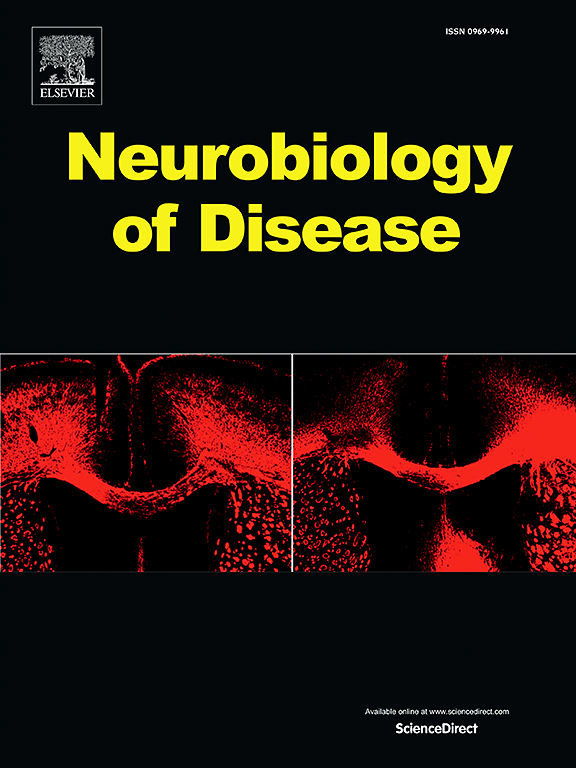血小板活化因子受体的核定位是缺血性脑卒中小胶质细胞吞噬的原因。
IF 5.1
2区 医学
Q1 NEUROSCIENCES
引用次数: 0
摘要
缺血性中风(IS)是全球发病率和死亡率的主要原因。改善IS预后的关键策略包括减轻神经元损失以增强神经可塑性,小胶质细胞在神经元存活中起着至关重要的作用。血小板活化因子受体(PTAFR)参与IS的病理过程;然而,其在病理性应激中的作用机制尚不清楚。在本研究中,我们研究了PTAFR在调节神经元小胶质细胞/巨噬细胞吞噬中的潜在作用,旨在寻找新的IS治疗策略。PTAFR mRNA和蛋白表达水平上调,在缺血性卒中后第5天达到峰值,此后逐渐恢复到基线水平。发现PTAFR介导IS小胶质细胞/巨噬细胞与神经元之间的相互作用。值得注意的是,IS后应激但存活的神经元的吞噬抑制依赖于PTAFR的核定位。机制上,核PTAFR募集转录因子特异性蛋白1 (SP1)启动乳脂球EGF因子8 (MFGE8)的转录。与膜不渗透性拮抗剂银杏内酯B相比,膜渗透性PTAFR拮抗剂Apafant显著增强IS模型小鼠的神经恢复。这种效果是通过抑制PTAFR核易位来实现的,这可以减少应激但存活的神经元的小胶质细胞/巨噬细胞吞噬。我们的研究结果揭示了核PTAFR介导的小胶质细胞/巨噬细胞吞噬的机制,并对缺血性卒中治疗中PTAFR拮抗剂的选择具有重要意义,特别是那些靶向核受体的拮抗剂。本文章由计算机程序翻译,如有差异,请以英文原文为准。

Nuclear localization of platelet activating factor receptor accounts for microglial phagocytosis in ischemic stroke
Ischemic stroke (IS) is a leading cause of global morbidity and mortality. A critical strategy for improving the prognosis of IS involves mitigating neuronal loss to enhance neuroplasticity, with microglia playing a vital role in neuronal survival. The platelet activating factor receptor (PTAFR) participates in the pathological processes underlying IS; however, little is known about its mechanism in pathological stress. In this study, we investigated the potential role of PTAFR in regulating the microglia/macrophage phagocytosis of neurons, aiming to identify new therapeutic strategies for IS. The mRNA and protein expression levels of PTAFR were upregulated, peaking on day 5 post-ischemic stroke and gradually returning to baseline levels thereafter. PTAFR was found to mediate interactions between the microglia/macrophage and neurons in IS. Notably, the inhibition of phagocytosis of stressed-but-viable neurons following IS depends on the nuclear localization of PTAFR. Mechanistically, nuclear PTAFR recruited the transcription factor Specificity Protein 1 (SP1) to initiate the transcription of milk fat globule EGF factor 8 (MFGE8). In comparison to the membrane-impermeable antagonist Ginkgolide B, the membrane-permeable PTAFR antagonist Apafant significantly enhances neurological recovery in IS model mice. This effect is achieved by inhibiting PTAFR nuclear translocation, which reduces microglia/macrophage phagocytosis of stressed-but-viable neurons. Our findings provide insight into the mechanism of nuclear PTAFR-mediated microglia/macrophage phagocytosis and have significant implications for the selection of PTAFR antagonists in the treatment of ischemic stroke, particularly those targeting nuclear receptors.
求助全文
通过发布文献求助,成功后即可免费获取论文全文。
去求助
来源期刊

Neurobiology of Disease
医学-神经科学
CiteScore
11.20
自引率
3.30%
发文量
270
审稿时长
76 days
期刊介绍:
Neurobiology of Disease is a major international journal at the interface between basic and clinical neuroscience. The journal provides a forum for the publication of top quality research papers on: molecular and cellular definitions of disease mechanisms, the neural systems and underpinning behavioral disorders, the genetics of inherited neurological and psychiatric diseases, nervous system aging, and findings relevant to the development of new therapies.
 求助内容:
求助内容: 应助结果提醒方式:
应助结果提醒方式:


